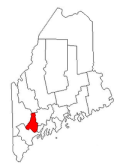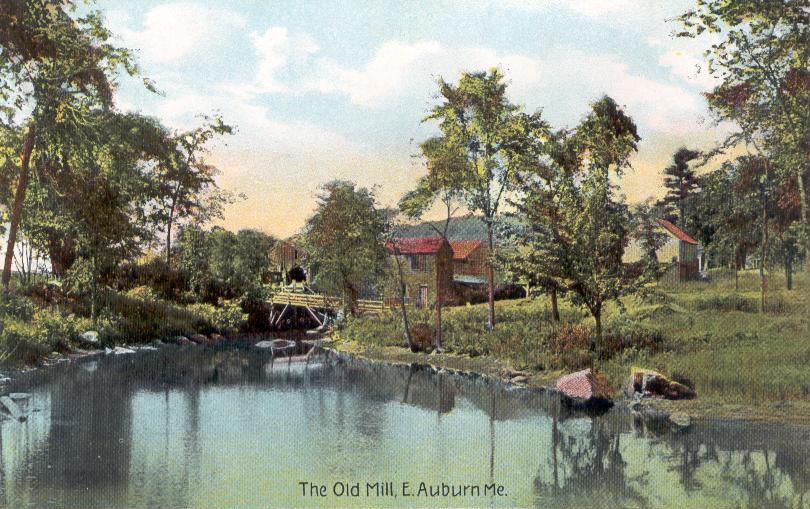The area was originally part
of the Pejepscot Purchase, land bought in
1714 by a consortium from Boston and
Portsmouth following the Treaty of
Portsmouth, which brought peace between
the Abenaki Indians and English
settlements. In 1736, however, the
Massachusetts General Court granted a
large section of the land to veterans of
the 1690 Battle of Quebec. Conflicting
claims led to prolonged litigation;
consequently, settlement was delayed until
after the French and Indian Wars.
Auburn was first settled in 1786 as part
of Bakerstown, renamed Poland when it was
incorporated by the Massachusetts General
Court in 1795. It was then part of Minot,
set off from Poland and incorporated in
1802. Auburn would itself be set off and
incorporated on February 24, 1842. The
name was apparently inspired by "Auburn",
a village (real or fictitious) featured in
the 1770 poem "The Deserted Village" by
Oliver Goldsmith. Originally part of
Cumberland County, the town became county
seat of Androscoggin County at its
creation in 1854. By annexing land from
towns around it, including part of Poland
in 1852, Minot in 1873, and all of
Danville (first called Pejepscot) in 1867,
Auburn grew geographically into one of
Maine's largest municipalities.
Incorporated a city in 1868, Auburn in
1917 would be the first city in the state
to adopt a council-manager form of
government.
Farms supplied grain and produce, but with
construction of the bridge to Lewiston in
1823, and especially after arrival of the
Atlantic and St. Lawrence Railroad from
Portland in January 1848, the community
developed into a mill town. Mills were
built to operate by water power from falls
on the Androscoggin River and Little
Androscoggin River. In 1835, the factory
system of shoe manufacture originated at
Auburn. Other firms manufactured cotton
and woolen textiles, carriages, iron
goods, bricks and furniture. The
population in 1860 was only about 4,000
but by 1890 it was about 12,000, when its
shoe factories attracted many French
Canadian immigrants, many of whom arrived
by train from Quebec. Steady population
growth continued to about 1960 when the
population was about 24,500.
In Auburn, shoe manufacturing became the
dominant industry by the late 19th
century. The City Seal, depicting a
spindle with different types of shoes at
each outside point, was designed when
Auburn was positioning itself as the shoe
manufacturing center of Maine in the
mid-19th century. In 1917 one factory in
Auburn was producing 75 percent of the
world's supply of white canvas shoes;
however, after World War II the shoe
industry began to decline, and between
1957 and 1961 the largest manufacturers
closed their factories.
[Source and Contributor:
Unknown]
|



